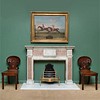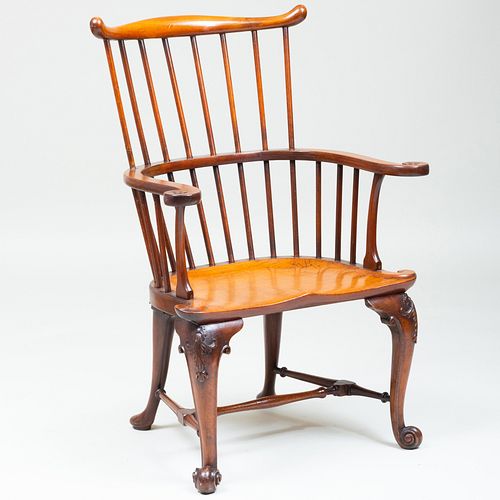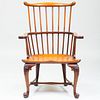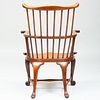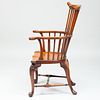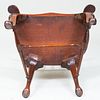Fine George II Mahogany Comb Back Windsor Armchair
Bid Increments
| Price | Bid Increment |
|---|---|
| $0 | $25 |
| $200 | $50 |
| $500 | $100 |
| $3,000 | $250 |
| $5,000 | $500 |
| $10,000 | $1,000 |
| $30,000 | $2,500 |
| $100,000 | $5,000 |
43 1/4 x 30 x 23 1/2 in., height of seat 17 1/2 in.
Note: An identical Windsor chair is illustrated in Cotton, Bernard D., The English Regional Chair, Woodbridge, Suffolk: Antique Collectors Club Publishing, 1990, p. 46, fig. TV17. This identical Windsor model is also illustrated in a Vernay & Jussel, Inc. catalog with an accompanied footnote: The system of roads left by the Roman occupation of Britain had remained, for almost 1,700 years, the basis of land travel in all areas of the island. It was only at the start of the eighteenth century that major improvements and expansion of the roads began, largely due to the impetus of trade requirements. One by-product of this new ease of travel was the pooling in London of talent drawn from the provincial areas. Gifted craftsman were able, as at no time before, to make the journey "up to London", from any part of the Kingdom, and profit from the higher wages and opportunities for advancement in the metropolis. Conversely, as people returned to their homes from a London visit, they carried back with them new ideas and new styles, profoundly influencing local customs.
This intercourse between London and the provinces led to an interesting cross-fertilization of styles, and local craftsman, their talent bred within the framework of an inherited tradition, refined rather than abandoned that tradition in the sophisticated, international atmosphere of the city.
The elegant adaptation of the popular Windsor chair is a product of such exchange. here the native beech, yew and ash have been replaced by imported (an expensive) mahogany. The flat out-scrolling arms and seat, the deeply scrolled brackets to the acanthus carved cabriole legs were all fashionable in the second quarter of the (18th) century. Most remarkable is the use of French scroll toes, so popular in the Rococo, integrated with perfect skill into a purely traditional design. "It is estimated that in 1750, 1 out of every 6 Englishman had had direct contact with the capitol." See Wrigley, "A Simple Model of London's Importance, Past and Present", No. 37, July 1967.
We are grateful to Chis Jussel for providing us with this information.
